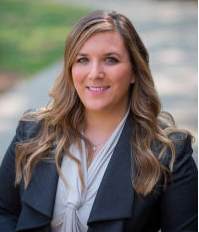When Ethics Meets Crisis Communications

Although Ethics Month has passed, it is not uncommon for an array of crises concerning ethical implications for communicators to break on a weekly basis. I decided to chat with crisis communication and ethics expert Dr. Julia Daisy Fraustino to get her take on the topic and discuss a new ethics model she created.
Q: How do you define crisis communication and how does that relate to ethics?
A: There are many definitions out there but simplistically we can define it as the communication between an organization and its publics surrounding a harmful situation. Crisis communication efforts often focus on protecting the organization, its stakeholders and others impacted by an adverse event.
Ethics in crisis communication are particularly important because crises often hold the ability to cause widespread damage, even injuries or deaths. Crises that require ethical and effective communication can range from organizational misdeeds (like bribery) to natural disasters (like floods). So far this year, for example, there’s been the Tide Pod Challenge, with teens daring each other to eat toxic laundry cleanser. We’ve seen Roseanne Barr’s racist tweets, which prompted ABC to pull the revival show Roseanne, now the highest-rated show ever to be canceled. And of course, natural disasters have been devastating recently, such as Hurricane Florence taking many lives and causing a great deal of damage just this month alone. Organizations’ communication leading up to, during and after each of these kinds of events can have grave repercussions. Communicating unethically does not only have moral consequences but it can have serious material consequences as well.
Q: I imagine it can be easy to slip into unethical behaviors when communicating about crises. How can you make sure this doesn’t happen?
A: You’re right and it might be even easier to make ethical missteps during crisis communication efforts than during routine times because they are usually fast-paced, high stakes and emotional. As a number of pros have cautioned: when it comes to crises in PR, it’s not a matter of if they occur, it’s a matter of when they occur.
So regardless of your position or industry, giving some serious thought to what ethical communication looks like to you and your organization before, during and after crises is crucial. One of the ways we can avoid missteps is to think through and visualize our ideal reactions. Creating a written crisis communication plan for a variety of possible crises and then simulating crises to test and reflect on your crisis responses are key tools for avoiding ethical transgressions when the real deal hits.
Q: What kinds of considerations do you suggest should go into a written crisis communication plan and other planning efforts?
A: There are many great resources out there for creating crisis communication plans. Ready.gov is one good starting place from a more traditional business standpoint. For plans related to risk and crisis communication from more of a public health or disaster communication approach, the U.S. Centers for Disease Control and Prevention published a Crisis and Emergency Risk Communication Manual(CERC) that is a wonderful resource. The CDC’s CERC manual goes into communication science that can help any communicator better understand and reach audiences during crises and it covers topics like psychology of crises, strategic message features, tips for spokespersons and media relations so I always encourage people interested in crisis communication to check it out. Another area I strongly advise communicators to consider all the time but perhaps particularly surrounding crisis communication is the ethics of communicating with vulnerable populations.
Q: Speaking of which, you recently created an ethics model for practitioners to apply to crisis communication, which you say centers on publics and the public interest. Can you tell us more about that?
A: I’d love to! I developed Applied Model of Care Considerations for ethical strategic crisis communication with my co-author, Dr. Amanda K. Kennedy, recently published in the Journal of Public Interest Communications. It helps practitioners work through particular categories of considerations based on the contexts and communities they are communicating with before, during and after crises. In our article, we apply the model to the #DeleteUber movement and the Nestle global infant-formula promotions crisis. We discuss how more thoughtfully considering physical, cultural, political/economic and human “landscapes of care” would have enabled the organizations to avoid those crises—or at least mitigate harm.
Q: Thanks for sharing your perspectives with us! We’ll have to check out that article.
A: You’re more than welcome! Please do check it out. And let me know what you think of it! You can reach me by email at jdfraustino@mail.wvu.eduor on Twitter at @JuliaDaisyPMC.
–
Julia Daisy Fraustino, Ph.D., is an assistant professor of advertising and public relations at West Virginia University. There, she is co-director of the Public Interest Communication (PIC) Research Laboratory in the Media Innovation Center and is the Sam Walton Fellow/Faculty Advisor of Enactus WVU. Fraustino lives in the South Hills, Pittsburgh area with her husband and infant daughter. They enjoy playing classical piano and cultivating an epic vegetable garden, and lately, they can’t get Baby Shark Doo Doo Doo Doo Doo Doo out of their heads.
Brittany Osteen is a senior studying public relations, sports psychology and forensic science at West Virginia University. From Harpers Ferry, West Virginia, she is currently the president of the WVU PRSSA Chapter. Follow @LittleOsteen on Twitter or Brittany Osteen on LinkedIn.


